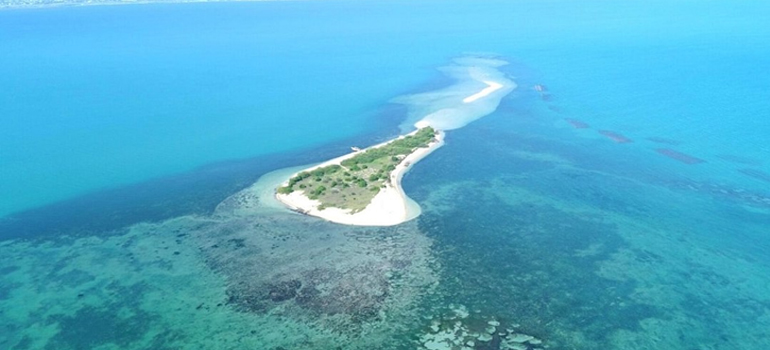
The Department of Environment of Tamil Nadu, along with IIT-Madras and Suganthi Devadason Marine Research Institute, spent five years saving the Vaan island in the Gulf of Mannar from disappearing into the ocean.
The Intergovernmental Panel on Climate Change (IPCC), the leading international body assessing climate change, predicts that sea levels would increase by 1.35 metres by 2100, drowning small islands in the ocean.
Though 2100 seems distant, Vaan island, a small strip of land between India and Sri Lanka, is already seeing the effects of the climate crisis. Since 1973, it has been sinking under the Laccadive sea. By 2015, the island lost 84 per cent of its land area.
In 2016, the scientists predicted that by next year, the island would be submerged underwater.
Apart from increasing sea levels, coral bleaching induced by climate change, rise in the temperature of the seawater, destructive fishing practices such as inshore trawling, shore seine operation, bio-invasion, pollution, tourism and mining of corals for construction are also responsible for the massive destruction of the ecosystem.
The area cover of Vaan Island was nearly 20.08 hectares, as measured from the Survey of Toposheet (1969). That’s the length of approximately 37.5 football fields.
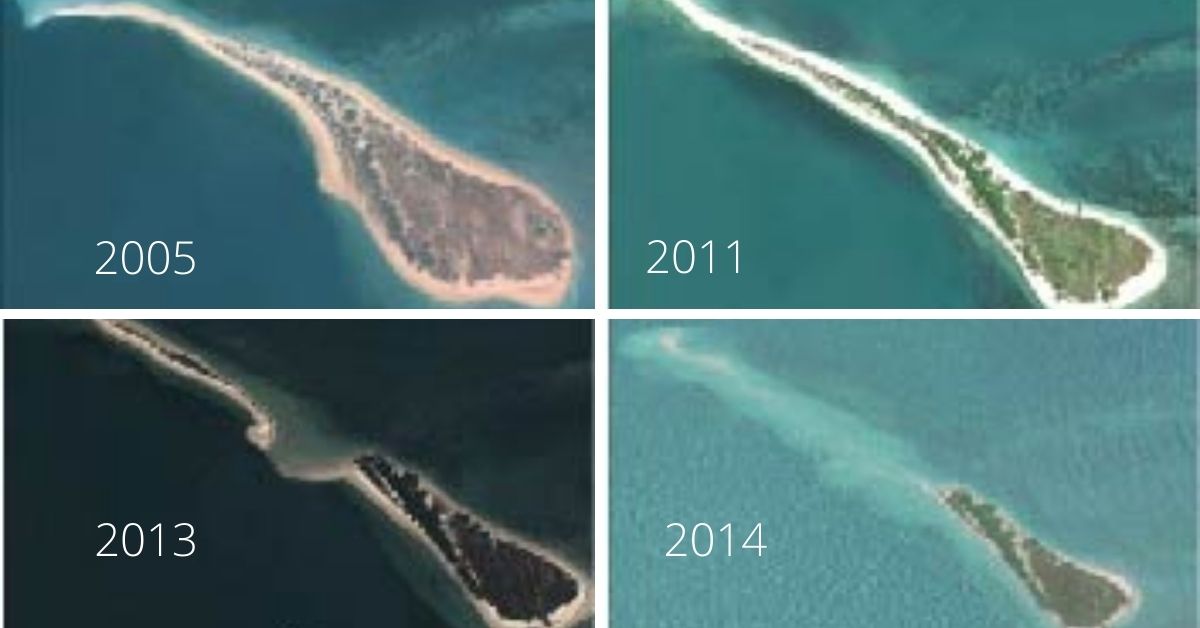
But constant erosion over the decades reduced the island to 16 hectares in 1986, which then sharply declined by half to 8.05 hectares in 2009. In 2013, the island split in half, as the middle land area sank. Two years later, the separated northern part disappeared into the sea completely. In 2015, the island, which once looked like a bulb, was reduced to a tiny patch of land stretched across 2.33 hectares.
But the timely and scientific interventions by government officials and experts increased the land cover by 54 per cent, saving the island from being completely lost. Today, the landmass is gradually rejuvenating.
How is this possible, you ask?
The data from October 2020 suggests the area during low tide, and high tide increased by 3.6 hectares and 2 hectares, respectively. This is all thanks to the ‘artificial reefs’ that have provided a coral haven, allowing them to thrive and prevent further erosion. This island is a coral reef ecosystem of the Gulf of Mannar on the Southeast coast and is the first in India to be successfully protected and restored from submergence.
Here is how the team achieved the impossible feat in five years.
“The island located in the Gulf of Mannar is a part of the group of 21 islands almost parallel to the Indian coastline. Among the cluster of islands were Vallanguchalli and Poovarasanpatti, but swallowed by the sea in the past. It was only a matter of time that the Vaan island was lost,” says AS Marimuthu, Wildlife Warden, Gulf of Mannar Marine National Park.
The Gulf of Mannar is home to one of the planet’s richest marine biodiversity with 23 per cent of India’s marine life, including 2,200 fish species and the finless porpoise, Indo-pacific bottlenose dolphin, over 100 species of crabs and humpback whales.
Edward Patterson, director at Suganthi Devadason Marine Research Institute (SDMRI), says, “Corals use dissolved carbon from the seawater to build the skeleton and hence are capable of tackling climate change. Corals also serve as carbon sinks. Further, it provides shelter to various flora and fauna that are important to maintain climate change under control.”
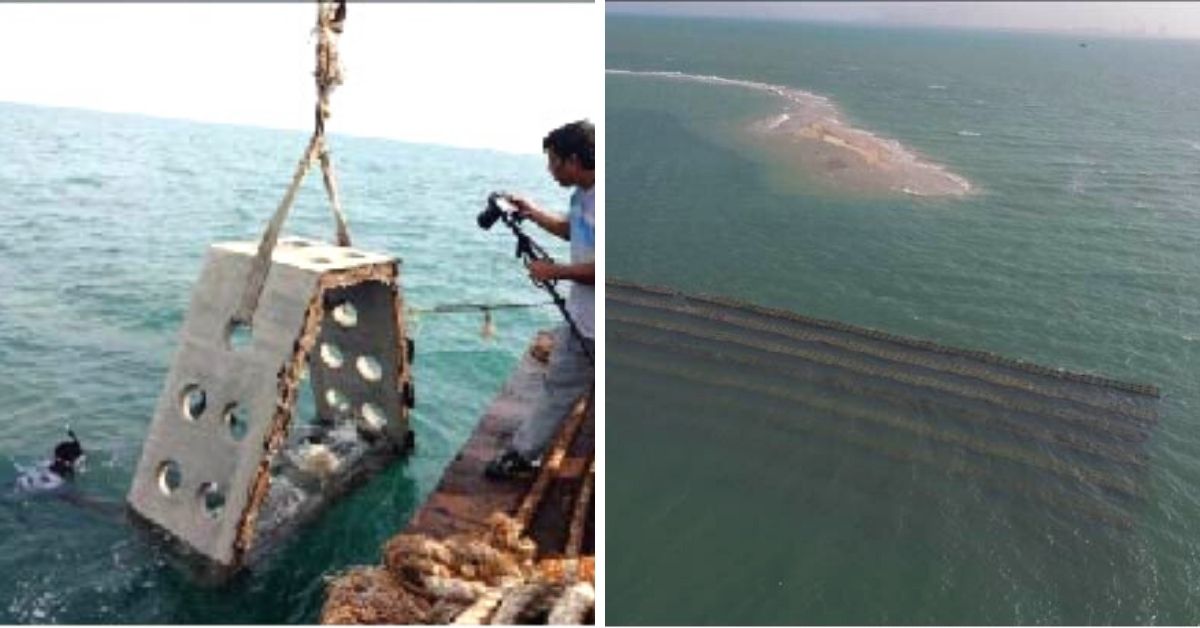
He adds that temperature anomalies caused by climate change, space competition, disease outbreaks, bio-invasion along with destructive fishing and pollution are some of the critical threats to corals.
The rapid sinking of the island worried the Indian government officials and scientists closely monitoring the phenomenon. The eroding isle put the rich marine biodiversity under serious threat. “Though the islands are uninhabited, the land and marine life serve as a defence against the harsh weather in the sea protecting the mainland. Moreover, the fishermen take shelter in the protected land during rough weather,” Marimuthu says.
“Tuticorin is 6 km away from the Vaan island, and any sea-level rise would directly affect the coastline and fishermen living at the edge,” he tells The Better India.
Marimuthu says that considering the worrying situation, the central government included all corals under schedule I of the Wildlife (Protection) Act in 2001. To offer further protection, the Supreme Court put a carpet ban on coral mining activities in 2005.
But the decades of mining and resource extraction ensured the damage was long term. Edward, who has been studying these islands for decades, says, “The excessive mining damaged the reef geomorphic structures around the island and disturbed the natural structures before coral mining came to a halt.”
He adds that the alterations in the reef geomorphic structures by coral mining affected the hydrodynamic conditions or the wave climate around Vaan Island. “In the absence of corals and other marine vegetation, the waves started vigorously hitting the shore of the subcontinental land in the southwest to northeast direction. The changed dynamics resulted in high energy waves approaching the island and began destabilising it,” he explains.
In 2016, Tamil Nadu and the Central Government sanctioned Rs 25 crore to carry out restoration work for the ecological entity. The Department of Environment heading the restoration works roped in experts from IIT-Madras and SDMRI. The scientists were to identify solutions and implement them.
Sharing insights on the restoration work, Edward says, initially, the triangular Artificial Reef (AR) modules were deployed for biodiversity enhancement and fishery production in the area based on the wave dynamic studies shared by the IIT-M. “Moreover, about 10,600 perforated trapezoidal AR modules were laid in the area in clusters keeping a gap of 20 meters between each. The artificial reef structure attracted corals and offered them a safe space to live in the damaged ecosystem,” he says.
Professor S A Sannasiraj from IIT-M says that the trapezoidal structures helped to dissipate the high wave energy and assisted deposition of the sediments. “It further provided nutrients to the organisms attached to the modules. The large population of corals may work as biological sediment deposition factories and stabilise the island in future,” he says, adding that the holes in the modules help protect fish from predators.
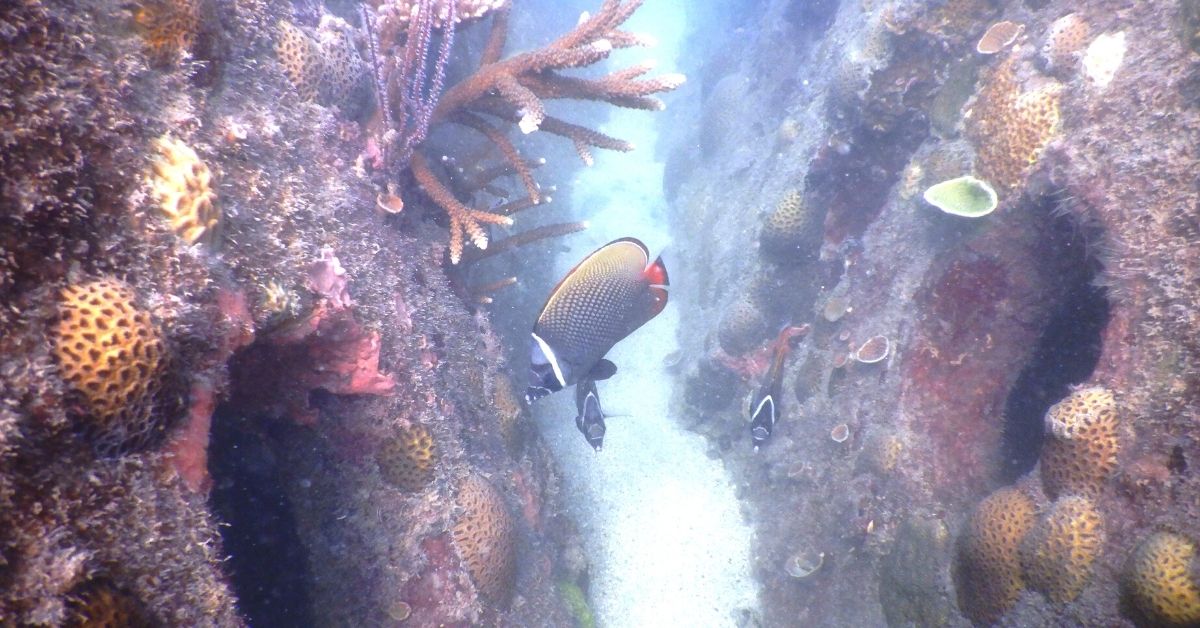
“The artificial reef modules further play the role of adaptation to the fish population and other biodiversity against climate change variations. It helps to reduce the migration of fishes during elevated water temperature and increase the fish population. Therefore, the dependent poor small scale fishermen will get sustained fish catch and livelihood,” he adds.
Sannasiraj says the water around the split has become shallower. Its depth was reduced from 2.5 meters to 0.5 meters between 2015 and 2020, respectively. “It is an indication of exposure to more land and may stabilise in a few years,” he says.
KV Giridhar, director of the department of environment, says, “As many as 37 coral species have been recorded so far from the AR modules. The common coral genera, a principal taxonomic category that ranks above species, were found attached. They are Goniastrea, Favites, Favia, Turbinaria, Pocillopora, Goniopora, Acropora and Porites. All the attached coral colonies are growing well over the modules and expected to reach sexual maturity, further increasing the coral biomass in Gulf of Mannar.”
Giridhar adds that apart from corals, other organisms such as soft corals, gorgonians, molluscs, gastropods, bivalves, crinoids, asteroids and echinoids have also taken refuge on AR modules.
“In total, we documented 58 epifaunal species belonging to major taxonomic groups. Some of them are hard corals (scleractinian corals), molluscs, sponges, hydroids, gorgonians, ascidians and echinoderms. Besides, Benthic macrofaunal communities belonging to 51 species were observed, of which the dominant members are molluscs,” he says.
The director says a total of 28 fish genera were spotted around the AR modules. “The richness of the fish species increased during the survey period and the dominant fish species observed are Scarus, Lutjanus, Chaetodon and Pempheris, Cirrhitichthys sp. and Mugil sp,” he adds.
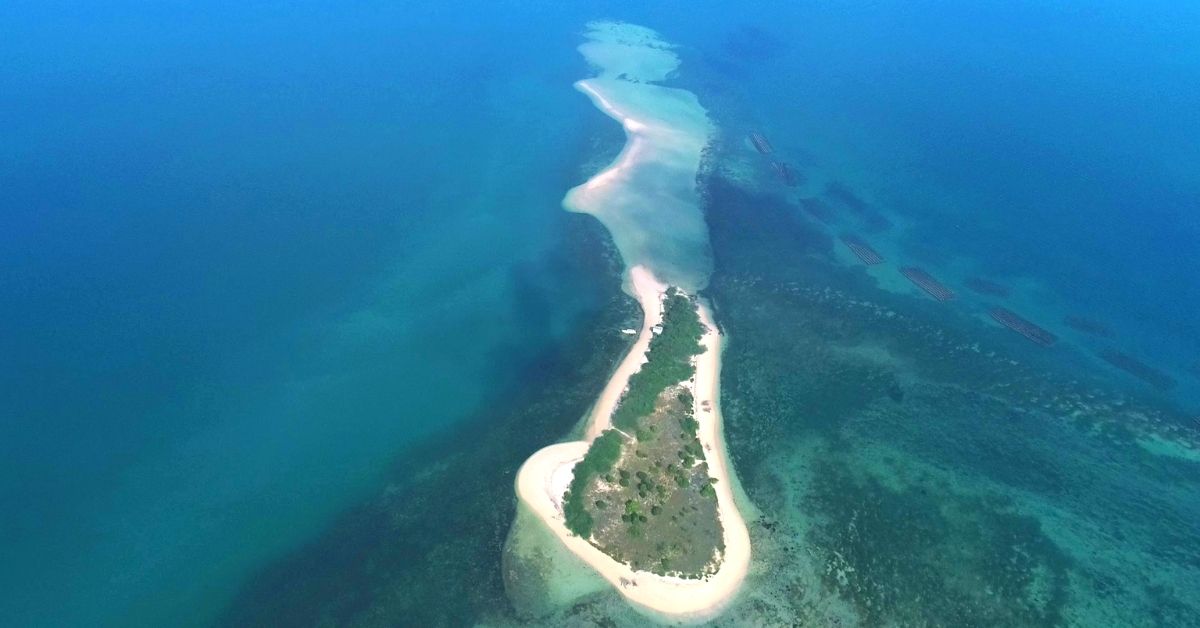
Edward says that creating the artificial reef was more than just the deployment of the structures. “The construction, transportation and deployment are highly laborious and risky. The transportation and deployment of AR should be done extremely precisely without damaging any live corals. Skilled diving professionals are required for proper deployment,” he says.
“Besides, the rough weather during deployment and monitoring is always a problem. Strong currents and poor visibility in and around the modules are another problem which takes significant time for deployment, monitoring and documentation,” Edward adds.
Marimuthu says that about Rs 6.25 crores were also spent with the United Nations Development Programme to provide alternate livelihood options to the fishermen. “They received training in net mending, pickle making, crafts and charcoal making,” he adds.
Edward says that the protection of these tiny landmasses becomes crucial to preserve the marine biodiversity around through a sheltered environment. “If the land is not in place, strong currents and waves would destroy all the reef-associated organisms.
The expert says that the success in island restoration and enhancing biodiversity is a unique example of ecological restoration. “It shows that if properly planned and executed, ecological restoration and climate resilience are possible. This planned deployment not only helped in reef recovery and enhancement of associated biodiversity in Gulf of Mannar but also would serve to enhance the climate resilience of the coral ecosystems by increasing the coral biomass and thereby restoring the ecological services,” Edward concludes.
Original News Link
https://www.thebetterindia.com/256708/iit-madras-innovation-drowning-vaan-island-tamil-nadu-suganthi-devadason-marine-research-institute-gulf-of-mannar-ipcc-sea-level-rise-climate-change-artificial-coral-reef-success-story-him16/